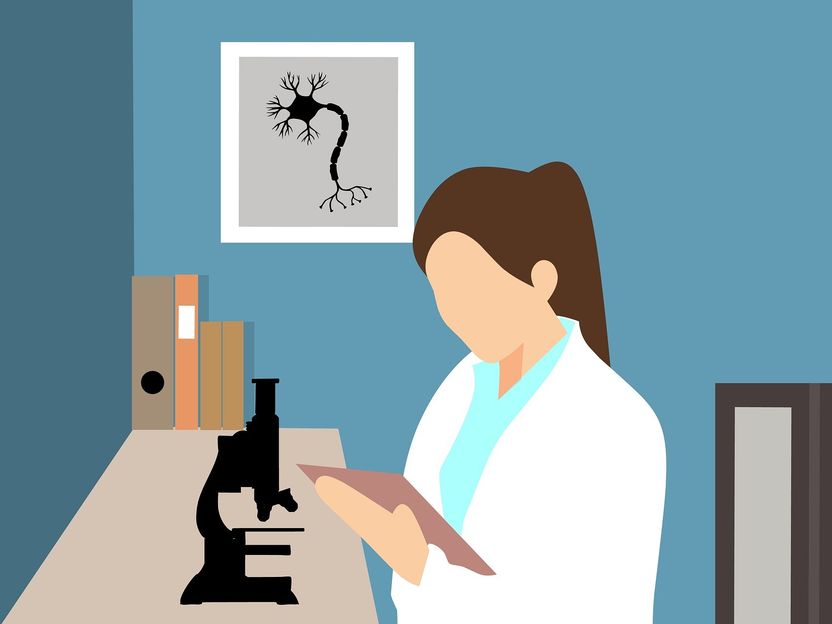Raman Microspectroscopy for Microbiology
Methodology can provide new insights into a variety of key topics in microbiology
Raman microspectroscopy is a fast and non-invasive technology to determine the chemical composition of living microorganisms in near real-time. Jürgen Popp, scientific director of the Leibniz Institute of Photonic Technology, together with an international team of expert scientists, describes the technical aspects of Raman analysis and practical approaches on how it can be applied to microbiological problems. The researchers recently published their introduction to the methodology and its potential for microbiology in Nature Reviews Methods Primer.

Symbolic image
pixabay.com
Raman microspectroscopy is a technology in which researchers couple a Raman spectrometer with an optical microscope to capture images of the biomolecular composition of heterogeneous samples such as a cell or tissue. In their article, the researchers explain technical aspects, provide guidance on how to successfully measure samples, and explain how Raman data can be processed and analyzed. The methodology can provide new insights into a variety of key topics in microbiology, such as the study of molecular exchanges between host and microorganism, between individual cells, or a cell and its environment. Researchers can gain deep insights into the workings of these interactions, on which marine microbial ecosystems to the human gut microbiome are based.
Raman technology as a future tool of choice in microbiology
Raman microspectroscopy makes it possible to provide near real-time chemical information from microorganisms – non-destructively, label-free, and in-situ (Latin for „in place“). This means that samples do not have to be forcibly removed, nor are they compromised by the measurement. This makes microspectroscopy a unique technique compared to alternative technologies for studying chemical aspects of microbial metabolism. The team of authors predicts that Raman microspectroscopy will become an important technology in the near future and possibly even the preferred technique for individual areas in microbiology.
While Raman microspectroscopy is already established in the physical sciences, microbiologists are only beginning to realize the full benefits of the technology. The team of experts describes how the performance and capacity of Raman microspectroscopy can be continuously expanded to find even broader application in the science of microorganisms. For this, it is of great importance to improve the sensitivity of the technique. Artificial intelligence methods will be used for data analysis. This will allow researchers to comprehensively measure the molecular composition of samples and identify unknown biochemical compounds. „I am convinced that Raman microspectroscopy has great potential for the life sciences. In this technical paper, we show ways in which the technology can be used in an interdisciplinary way and can also provide new, innovative solutions in other research fields such as microbiology,“ says Jürgen Popp.
Data storage and reproducibility by using an open portal
In collaboration with the European Molecular Biology Laboratory (EMBL), a web-based portal for the collection of biological Raman data will be created as part of the BioStudies initiative. The interactive repository will provide the ability to collect Raman data from microbiology and provide unrestricted open access to these data. Together with the necessary metadata, this will also facilitate the reproducibility of published results. This is expected to promote a broader application of Raman technology in microbiology and biology as a whole.
Original publication
Other news from the department science
These products might interest you
Most read news
More news from our other portals
See the theme worlds for related content
Topic World Spectroscopy
Investigation with spectroscopy gives us unique insights into the composition and structure of materials. From UV-Vis spectroscopy to infrared and Raman spectroscopy to fluorescence and atomic absorption spectroscopy, spectroscopy offers us a wide range of analytical techniques to precisely characterize substances. Immerse yourself in the fascinating world of spectroscopy!

Topic World Spectroscopy
Investigation with spectroscopy gives us unique insights into the composition and structure of materials. From UV-Vis spectroscopy to infrared and Raman spectroscopy to fluorescence and atomic absorption spectroscopy, spectroscopy offers us a wide range of analytical techniques to precisely characterize substances. Immerse yourself in the fascinating world of spectroscopy!































































